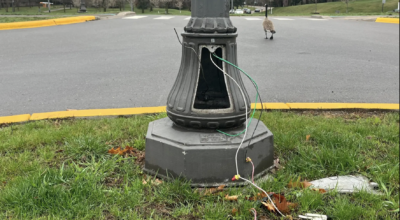Public pension plans are starved for funds
Published 10:14 am Monday, January 21, 2013
Minnesota’s plans underfunded $16B
ST. PAUL — Minnesota’s public pension plans for government employees are underfunded by $16.7 billion — a deficit that’s $4 billion larger than it was when lawmakers took steps to fix the problem in 2010.
The underfunded pensions aren’t a reason for alarm, experts say, but they say it is a problem that 11 of the state’s 12 public pension plans open to new members don’t have enough money coming in to cover promised benefits. Plans for state troopers, public safety workers, and local police and firefighters are among those with the largest gaps. Lawmakers will consider changes to those plans this year.
“Is there a need for concern? Yes,” said Larry Martin, executive director of Minnesota’s Legislative Commission of Pensions and Retirement. “We’re departing — significantly — from what we think we ought to be doing.”
The commission released the numbers last month. The figures are current through last June 30.
The plans pay for retirement for more than 729,000 current and retired state and local government workers and pay out about $3.8 billion in benefits annually.
In 2010, the Legislature made some changes to the pension plans to fix what was then a $12.7 billion deficit. The changes included requiring state workers and employers to pay more into the funds.
Some say the reforms need more time to show improvement.
“I know the people that run the funds; they’re looking at them and keeping an eye on them,” said state Rep. Michael Nelson, DFL-Brooklyn Park, who chairs the House Government Operations Committee, which heard testimony on Jan. 15 about the status of the plans. “I’m not that concerned, because I think the things we did in 2010 and moving forward are moving them in the right direction.”
Others say the state must do more to avoid a pension crisis.
“We are not gaining any ground on eliminating this unfunded liability,” said Mark Haveman, executive director of the nonpartisan Minnesota Center for Fiscal Excellence. “None of them are on a process, a timeline, under current law to be fully funded in 30 years. You’re transferring these significant liabilities to future generations.”
Haveman said the state needs to put at least $431 million into the pensions just to keep them from falling even more behind.
Public pensions operate under the principle that the current generation pays for its own benefits. The goal is to set contributions from workers and employers at amounts that would generate the right amount of return on investments to cover future benefits. But the assumptions aren’t always accurate. The current problem is proof of that: The stock market hasn’t yielded investment returns at the assumed level for years, and people are living longer so need more money upon retirement.
Nationwide, Minnesota’s pension funding ranks somewhere in the middle when compared with other states. A 2012 report from the Pew Center on the States says Minnesota and six other states had pension funds that need improvement.
Martin said if investment markets improve, the state’s pension plans will too.
The Legislature’s discussion about the most-troubled plans could result in a broader look at the financial health of all the plans. Lawmakers will have to decide whether to intervene now or wait for an economic recovery that might ease some of the problems.
Some say waiting and counting on the stock market is too big a risk. Others say increasing contributions now could result in cuts to services or tax increases as budgets are stretched thin.
“Those pensions are an obligation that citizens have to public employees, and you can’t just decide, ‘We can’t afford that,”’ said King Banaian, an economics professor at St. Cloud State University who just finished a term in the Minnesota House.




